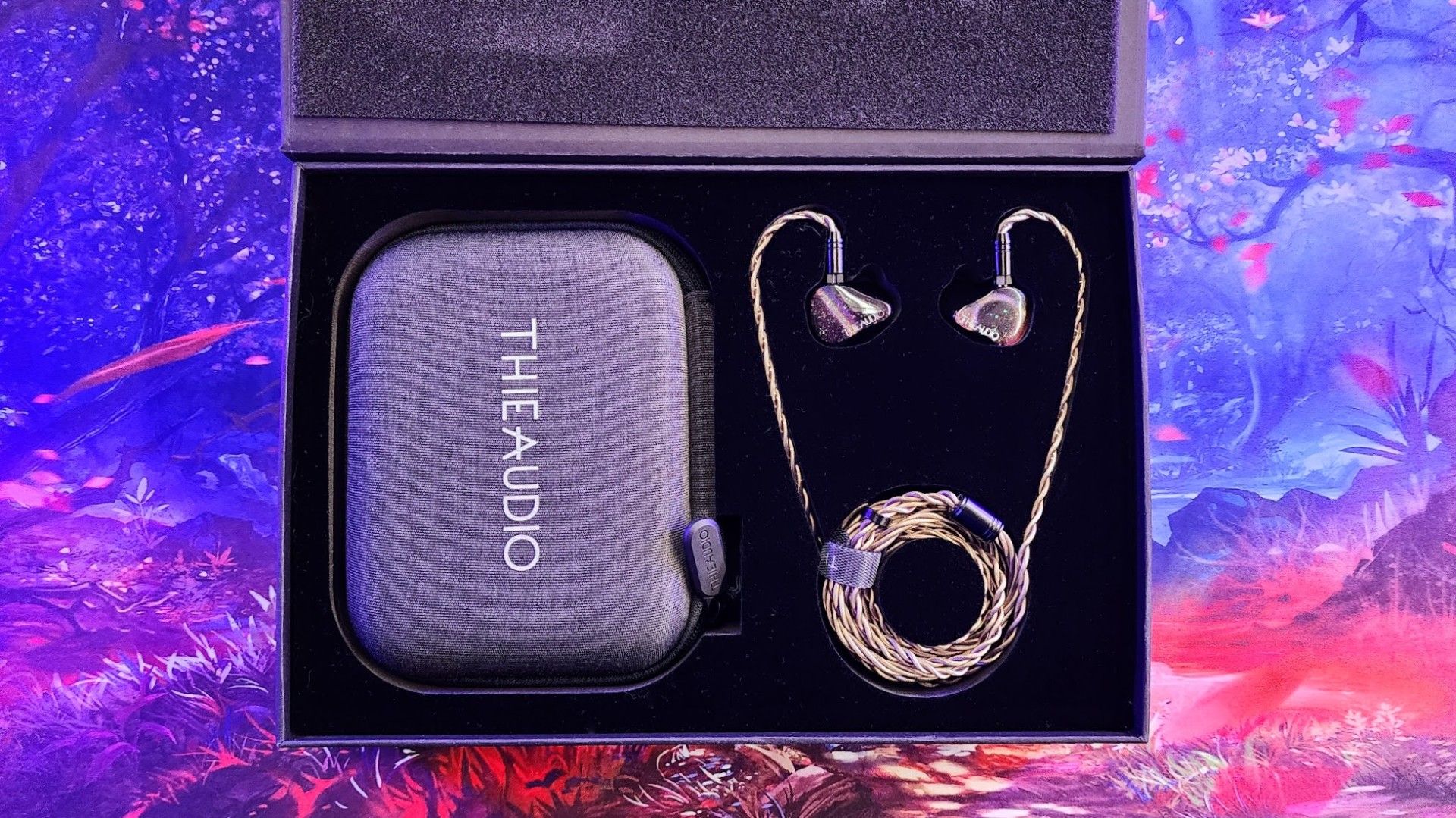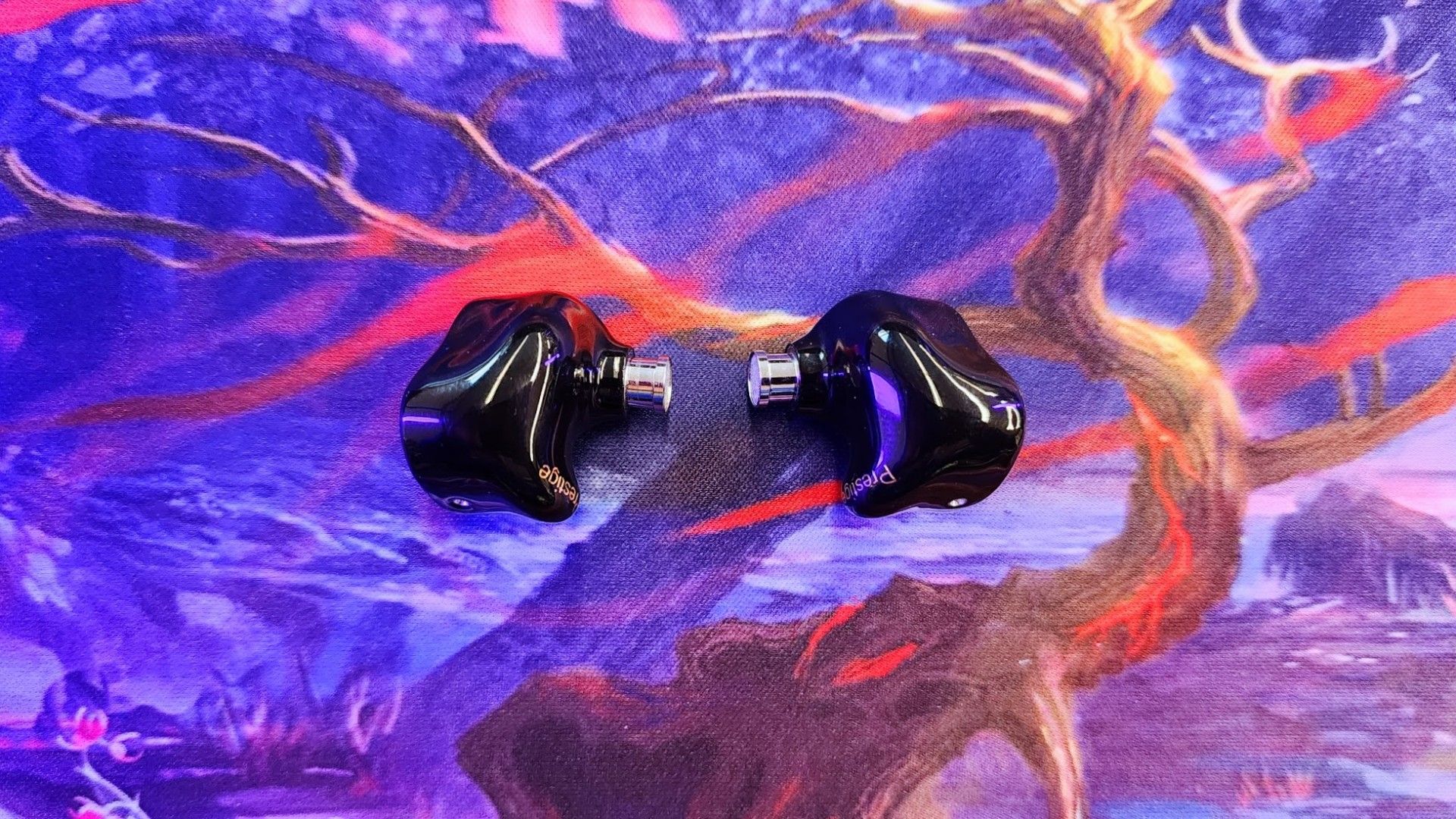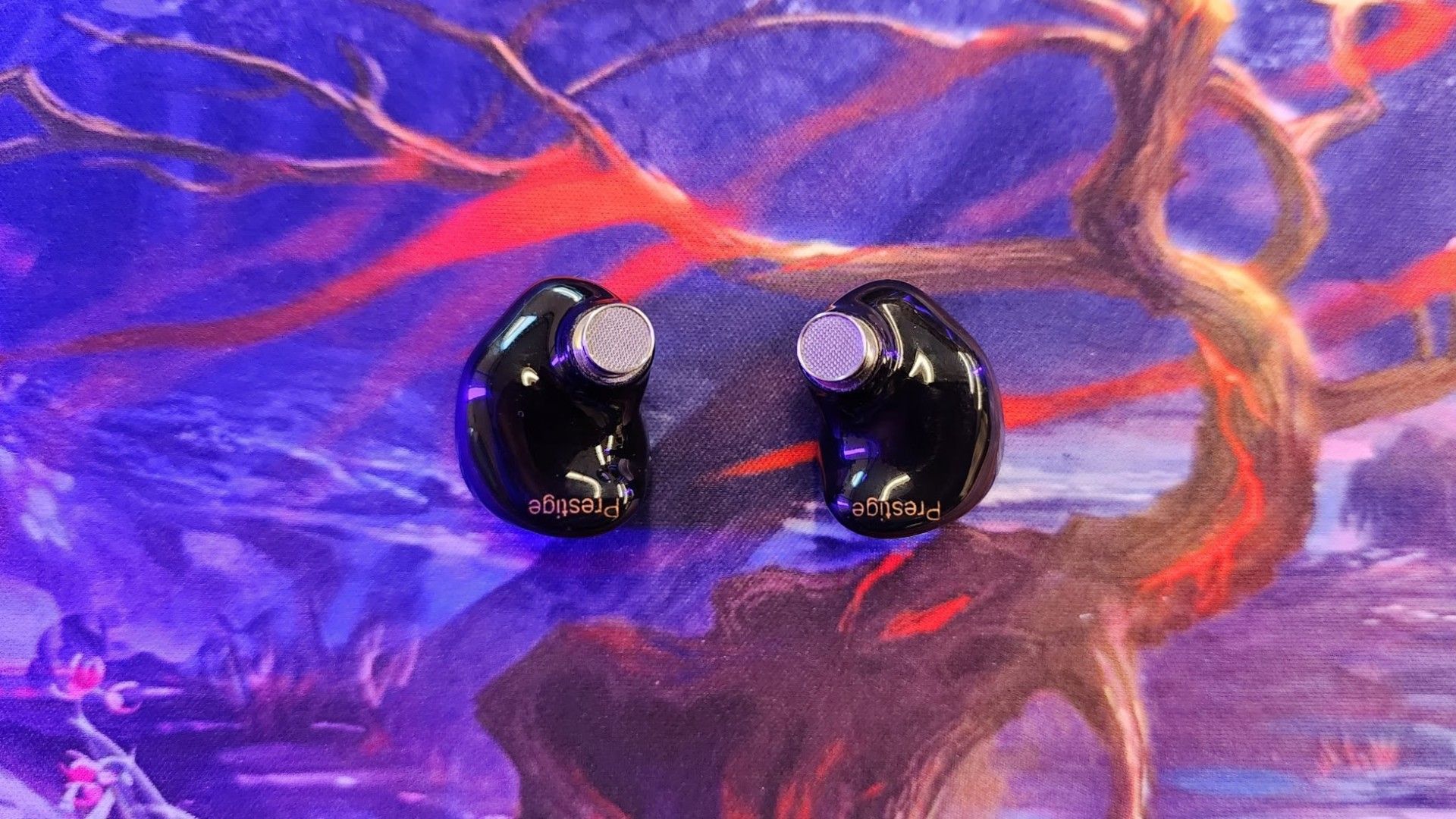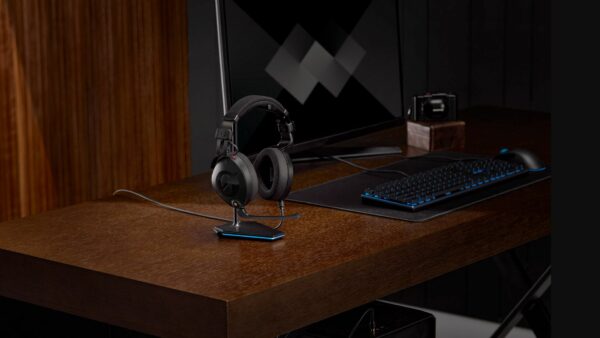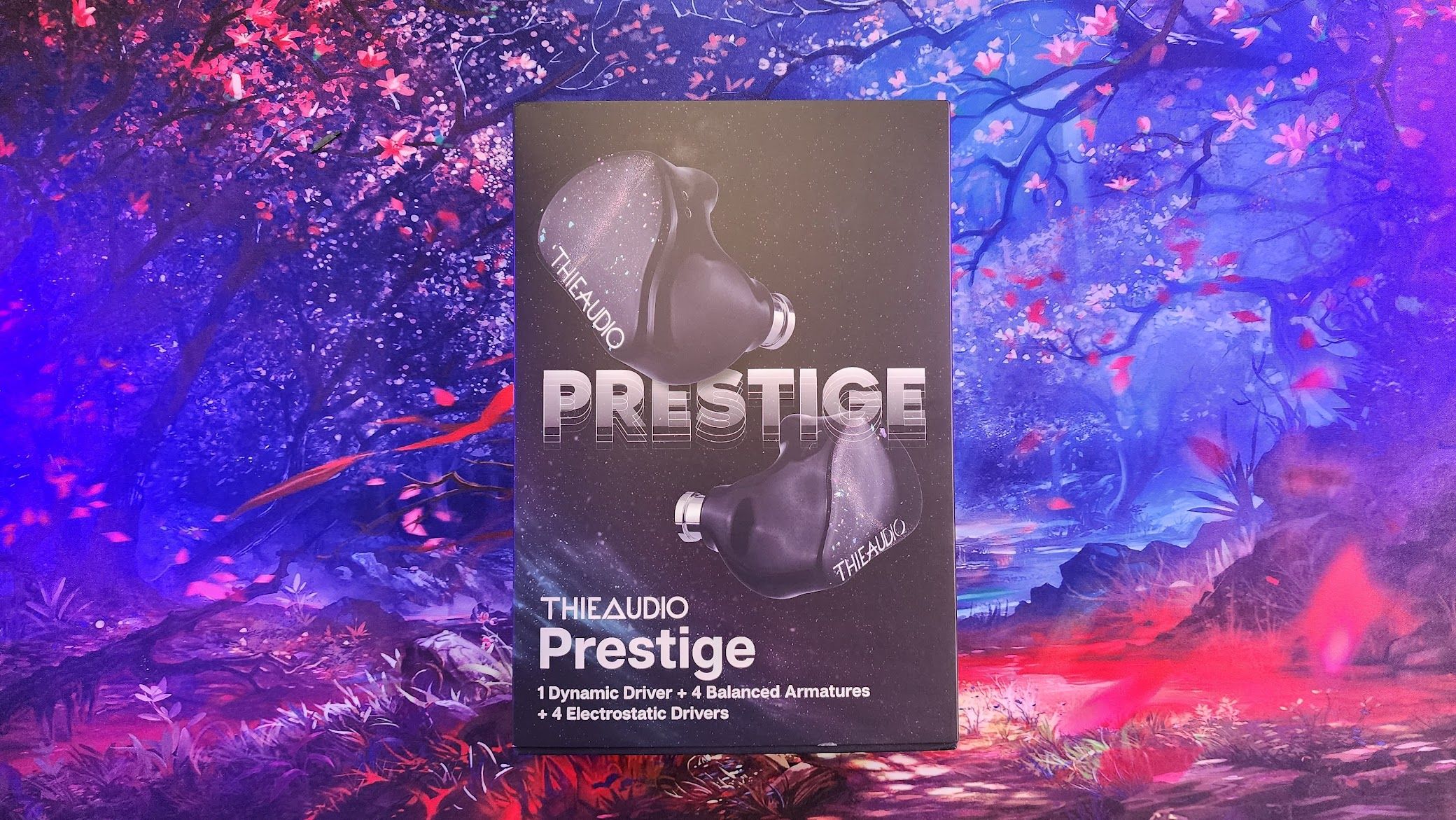
Welcome back to Golden Ears, our semi-regular column exploring the whole of high-end audio. Today, we’re looking at the latest top of the line set from our friends at Linsoul with the Thieaudio Prestige. Feature a tribrid design consisting of a dynamic driver, four balanced armatures, and four electrostatic drivers per side, does this earphone have what it takes to topple apex IEMs like the Thieaudio Monarch Mk.II for sound quality in music and games?
Specifications
- Current Price: $1299 (Linsoul)
- Type: In-Ear Monitors
- Drivers: 4EST + 4BA + 1DD
- Impedance: 11Ω
- Sensitivity: 95dB @1kHz
- Frequency Response: 20Hz-40kHz
- Cable Material: 22AWG 6N OCC Silver-Plated and Graphene Silver-Plated Cable
- Cable Length: 1.2 Meter
- Cable Plug Type: 2.5mm, 3.5mm, 4.4mm
Thieaudio Prestige – First Impressions and Key Features
The Thieaudio Prestige is the latest flagship pair of IEMs from Thieaudio. In comparison to some of the best known US brands, Thieaudio is relatively new. Launching in 2019, the company has produced some of the best sounding, highest value IEMs across its different price brackets. There have been some misses, but for the most part, it’s delivered a respectable track record.
The Prestige is one of its top-tier IEMs. It follows a tribrid design, which means it uses three separate types of drivers in each earpiece. A dynamic driver handles the bass, while four balanced armatures handle the mids and middle-highs, and another four electrostatic drivers handle the high and ultra-high frequencies. That means that each earpiece has nine separate drivers creating its sonic mix. Wearing both, eighteen tiny speakers wrap you their aural bliss.
Or so is the hope, but a great sounding IEM justifies its cost in more than just driver count.
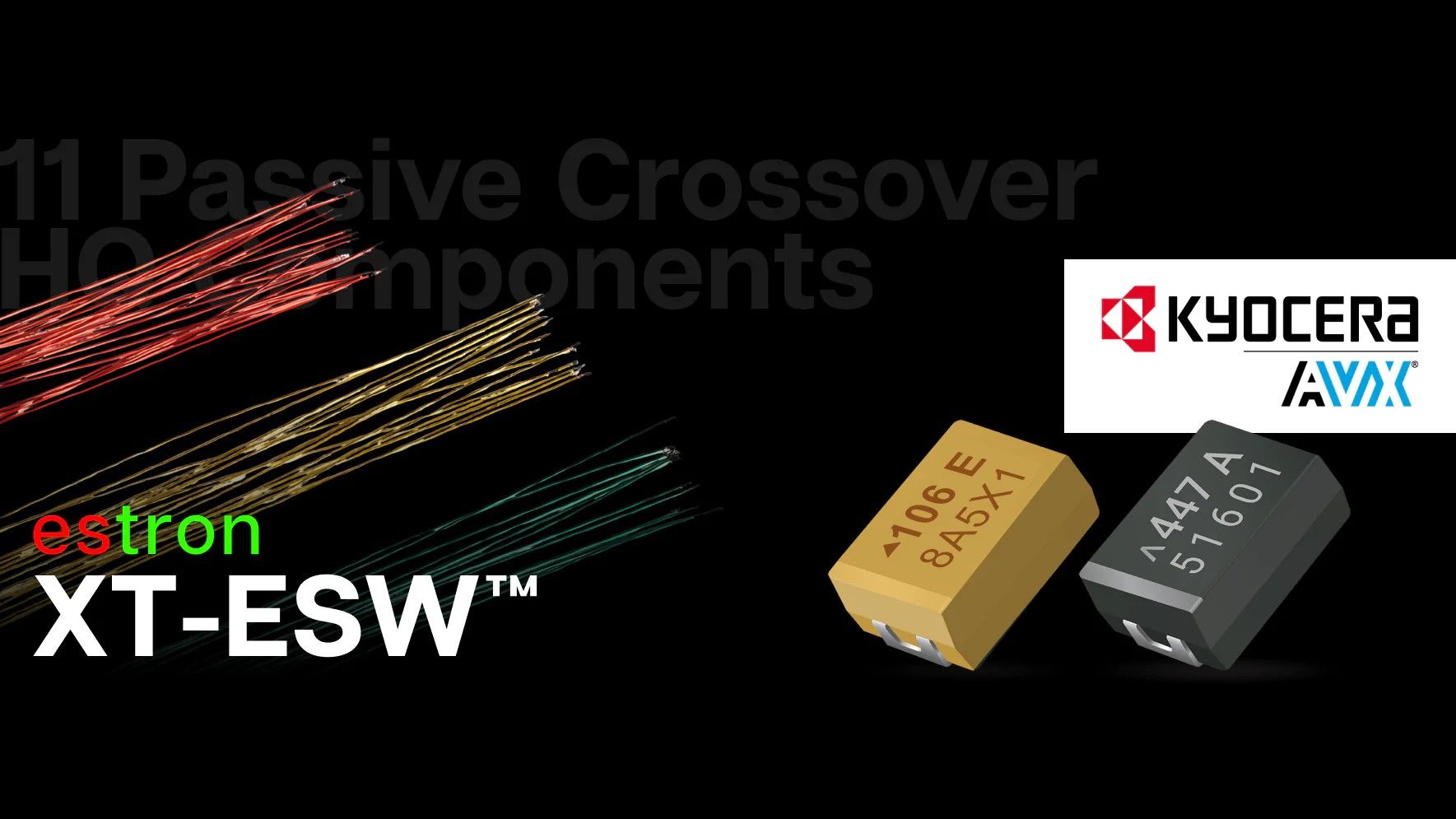
The Prestige’s high cost has to do with the particular type of drivers it’s using and how they’re implemented to create its sonic experience. While there are plenty of companies content to pack a dozen or more balanced armatures into its shells and charge less than $100, Thieaudio’s flagship is combining three separate types of drivers and making them work in tandem. That’s not a cheap thing to do, especially when incorporating four separate boutique electrostatic drivers into each earpiece.
Electrostatics, or ESTs, are fairly coveted in the audiophile world. EST headphones, for example, have been around for years but still cost thousands of dollars and require special equipment to run. IEMs have this technology implemented at a much smaller scale and don’t require specialize amplifiers to use, but do demand a level of expertise and craftsmanship to implement well. As a rule, tribrids are costly.
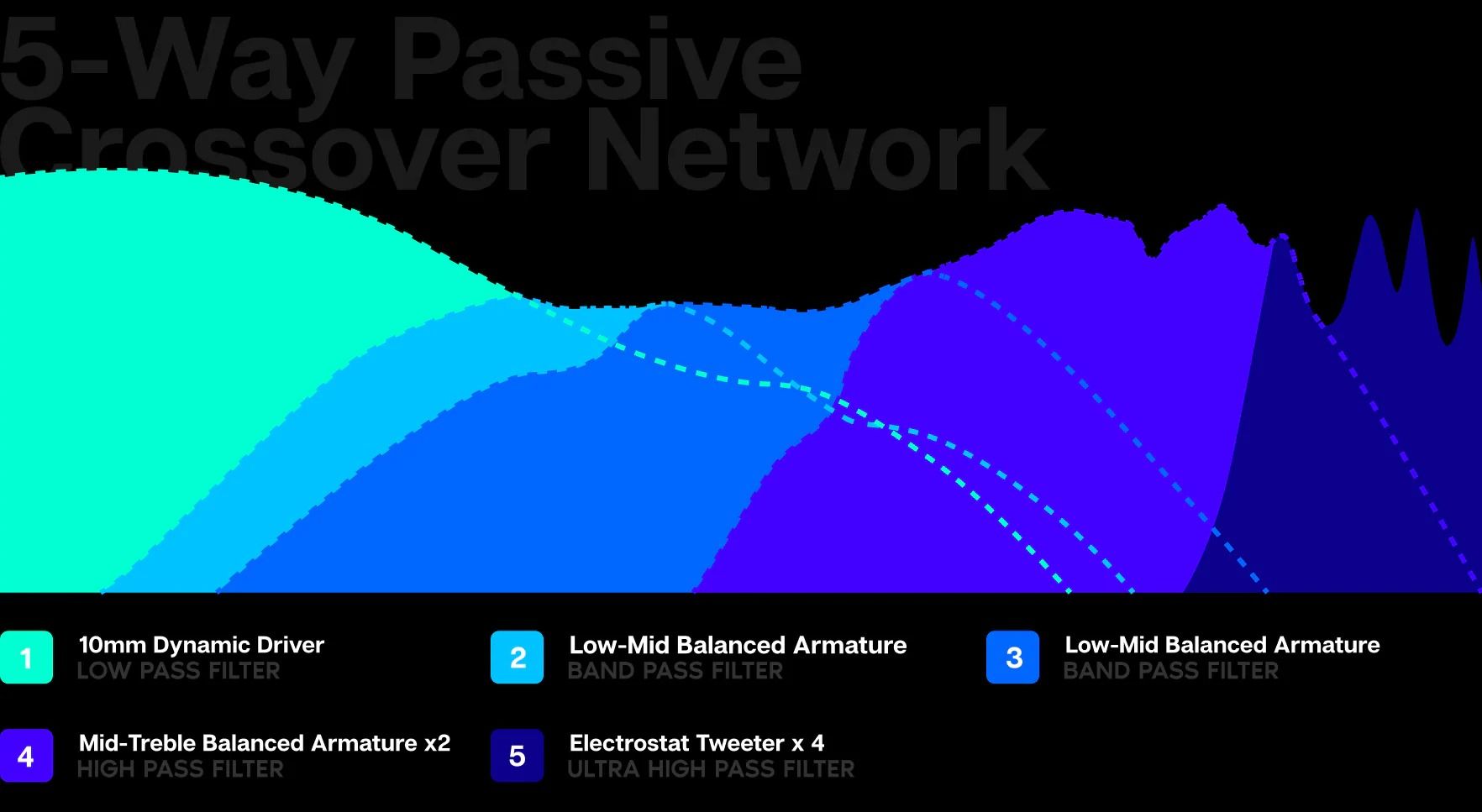
Even then, the Prestige is expensive, coming in at a full $300 more than Thieaudio’s prior flagship, the Monarch Mk.II. Part of the reason for that increase is that the Prestige trades two of the Monarch’s balanced armatures for two more electrostatic drivers. It also combines this array with a five-way frequency crossover, a device that controls what frequency ranges are sent to each driver, ensuring that each one can focus on the range it excels at.
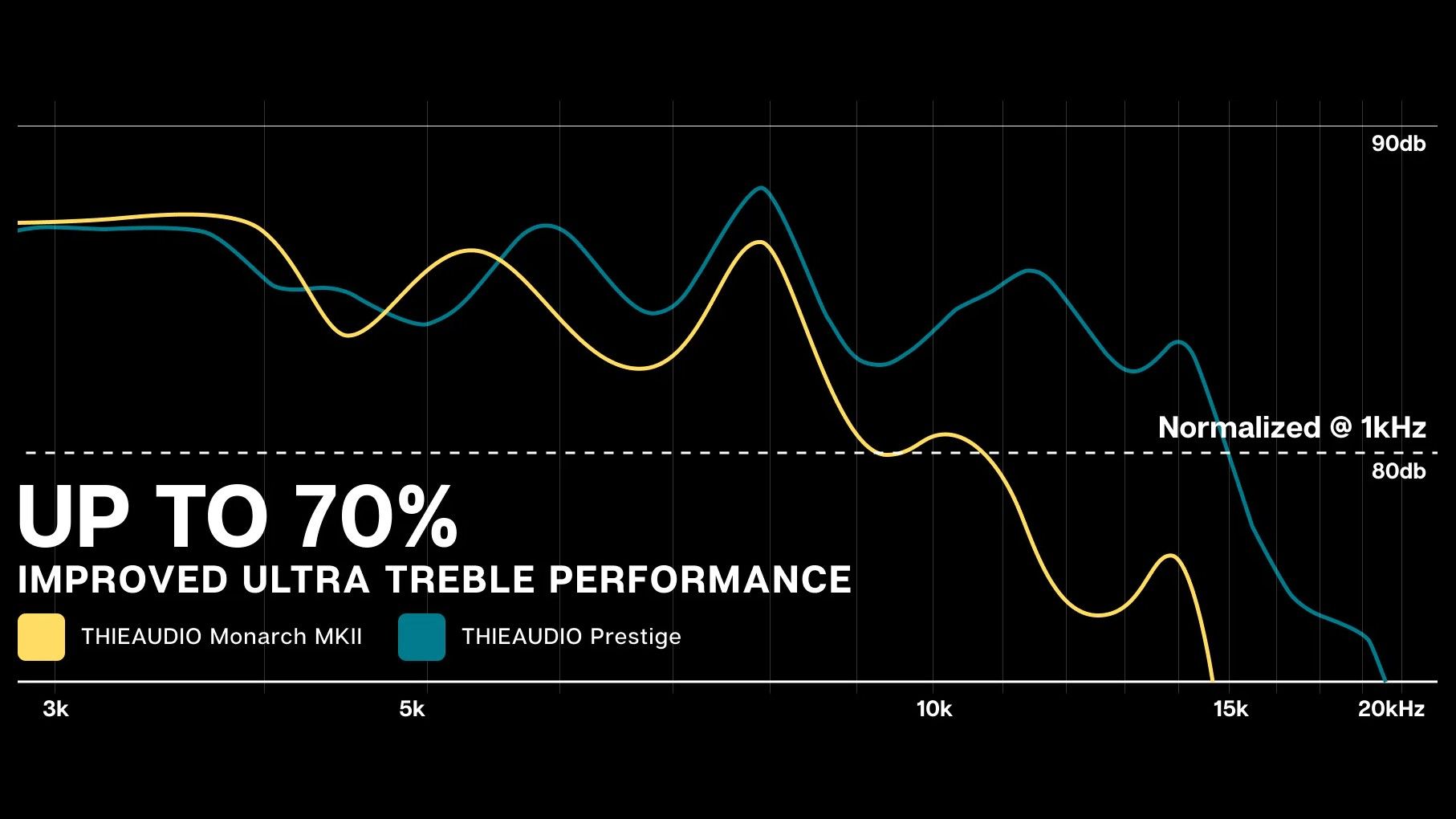
The Prestige also adopts a new tuning compared to the Monarch Mk.II. It has a bass shelf at 250Hz for low-reaching and authoritative low-end that’s not overwhelming. More noticeable though is the brighter treble. In the graph above, you can see that from about 6kHz on, the Prestige is louder and better extended through the treble, leading to a brighter, more sparkling sound.
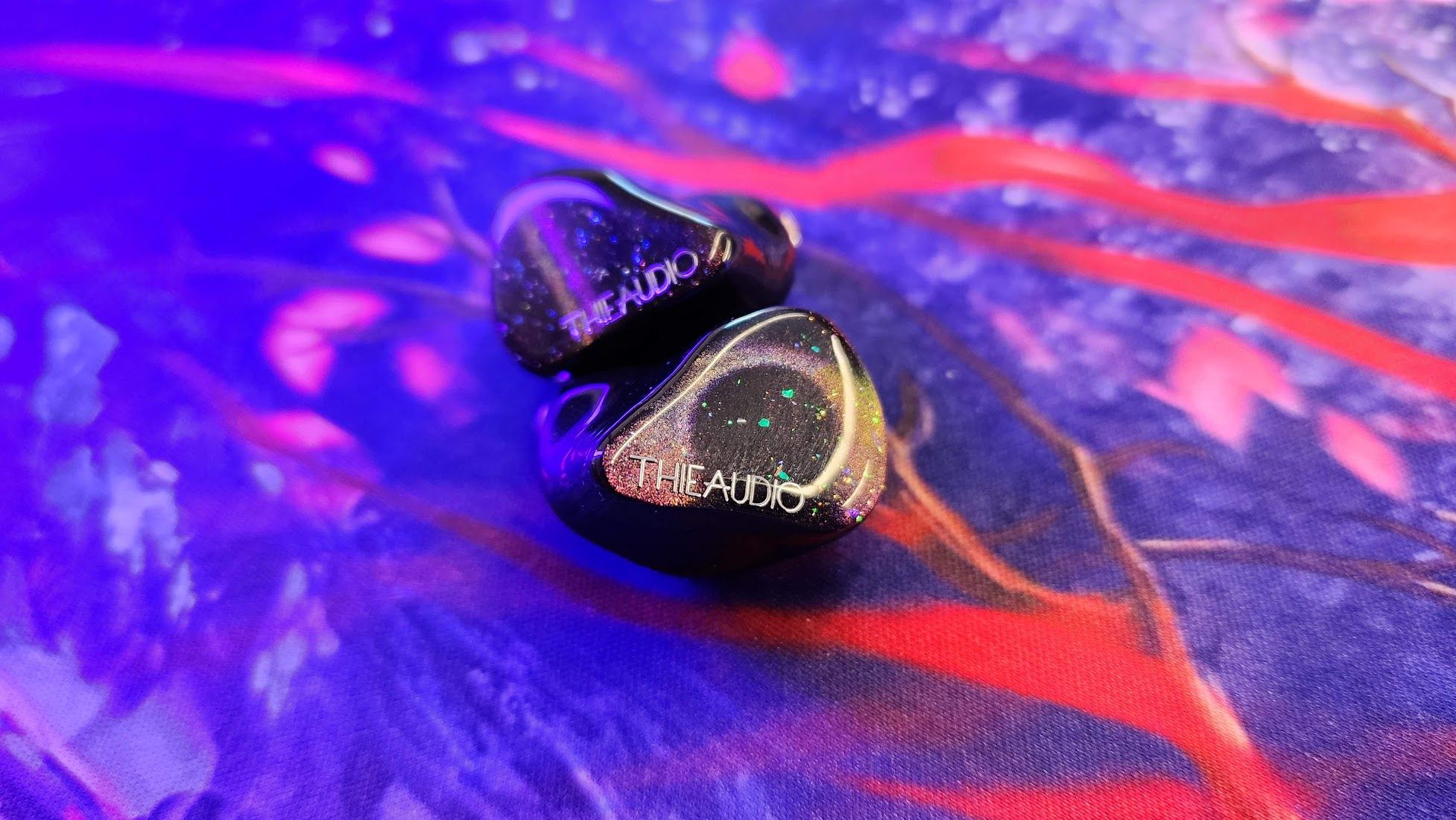
The IEMs also look the part of a true flagship IEM. The shells are crafted from medical grade resin in UIEM (universal IEM) form, which uses a database of ear models to help ensure a proper fit. The faceplates are gorgeous and evoke the deep vastness and beauty of space. There is definitely a boutique quality about their design.
Also inside the box, you’ll receive an excellent modular cable. It’s thick but soft, crafted from 6N oxygen-free copper and plated in graphene and silver. It uses modular ends, allowing you to quickly swap from a standard 3.5mm single-ended cable to 2.5mm or 4.4mm balanced terminations. The cable is fully replaceable thanks to its standard 2-pin connection but there’s little need to do so. It’s fantastic.
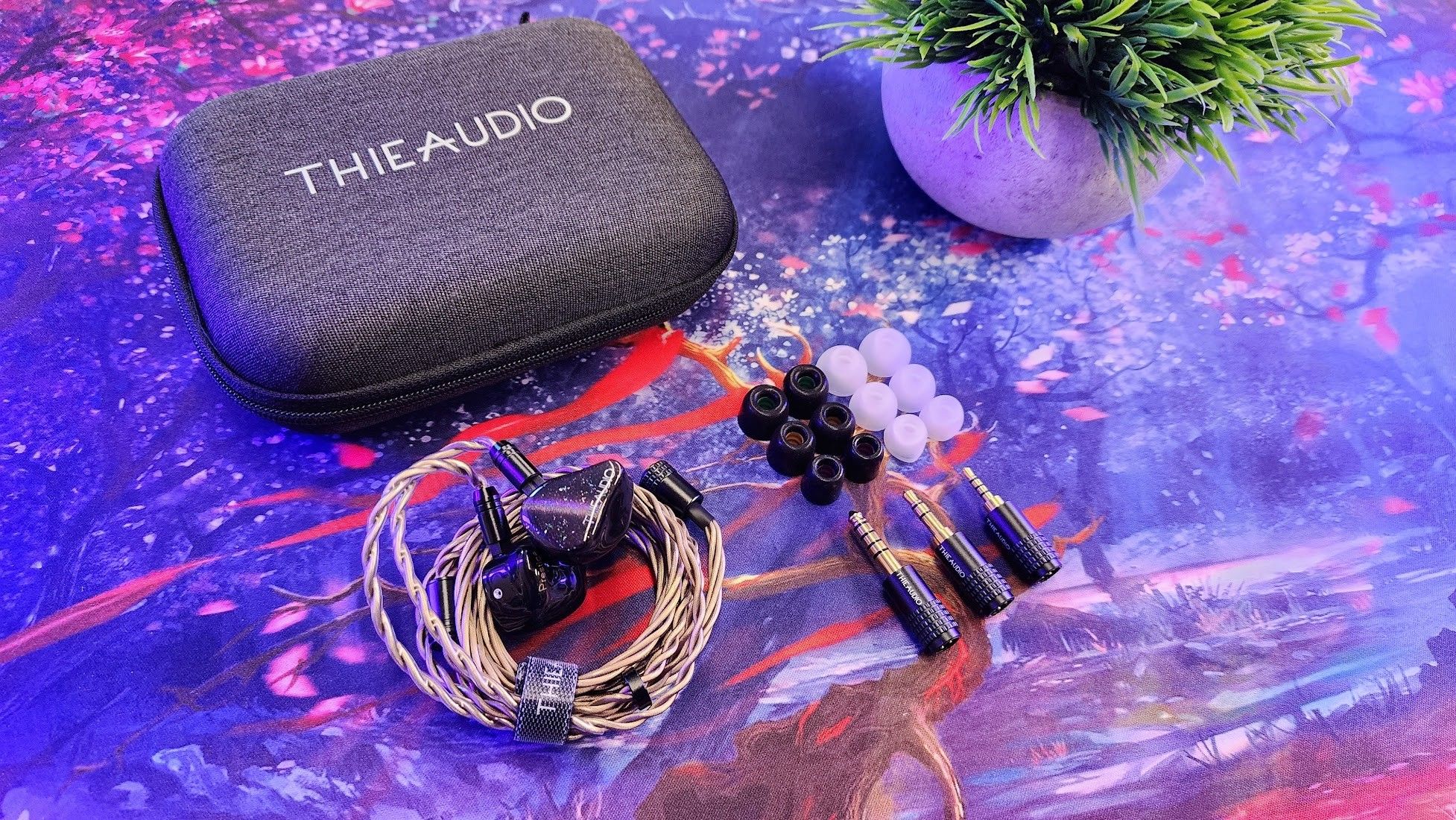
The earphones also come with a fabric, zippered, semi-hardback travel case and a section of silicone and memory foam ear tips. The accessory package is a bit light for an IEM of its caliber, but there’s enough here to allow you to find a proper fit (as long as you don’t have small ears) and to keep the earphones safe in transit.
Thieaudio Prestige – Fit and Comfort
With nine drivers to fit into each side, the ear pieces on the Prestige are on the larger side. That also applies to the nozzles, which are rather wide in diameter. This means that fit could be an issue if you have smaller ears. I consider myself mostly average when it comes to ear size but still found that they made for a tight fit, even with the smallest silicone ear tip. This wasn’t the case using the foam tips, so I would recommend using the foams if you use medium or small ear tips. This does mean that you’ll need to replace these over time, but if you’re buying $1300 earphones, shelling out $40 for a couple years worth of tips probably isn’t a big deal.
I usually prefer silicone for longevity and comfort, and given their size, I had to take a break after an hour or so of listening. This isn’t an issue with music too much but can be an issue when gaming. Mid-match, I was more likely to push it. Two hours with no break did make my ears sore. Choose your tips and listening time accordingly.
Thieaudio Prestige – Listening Impressions
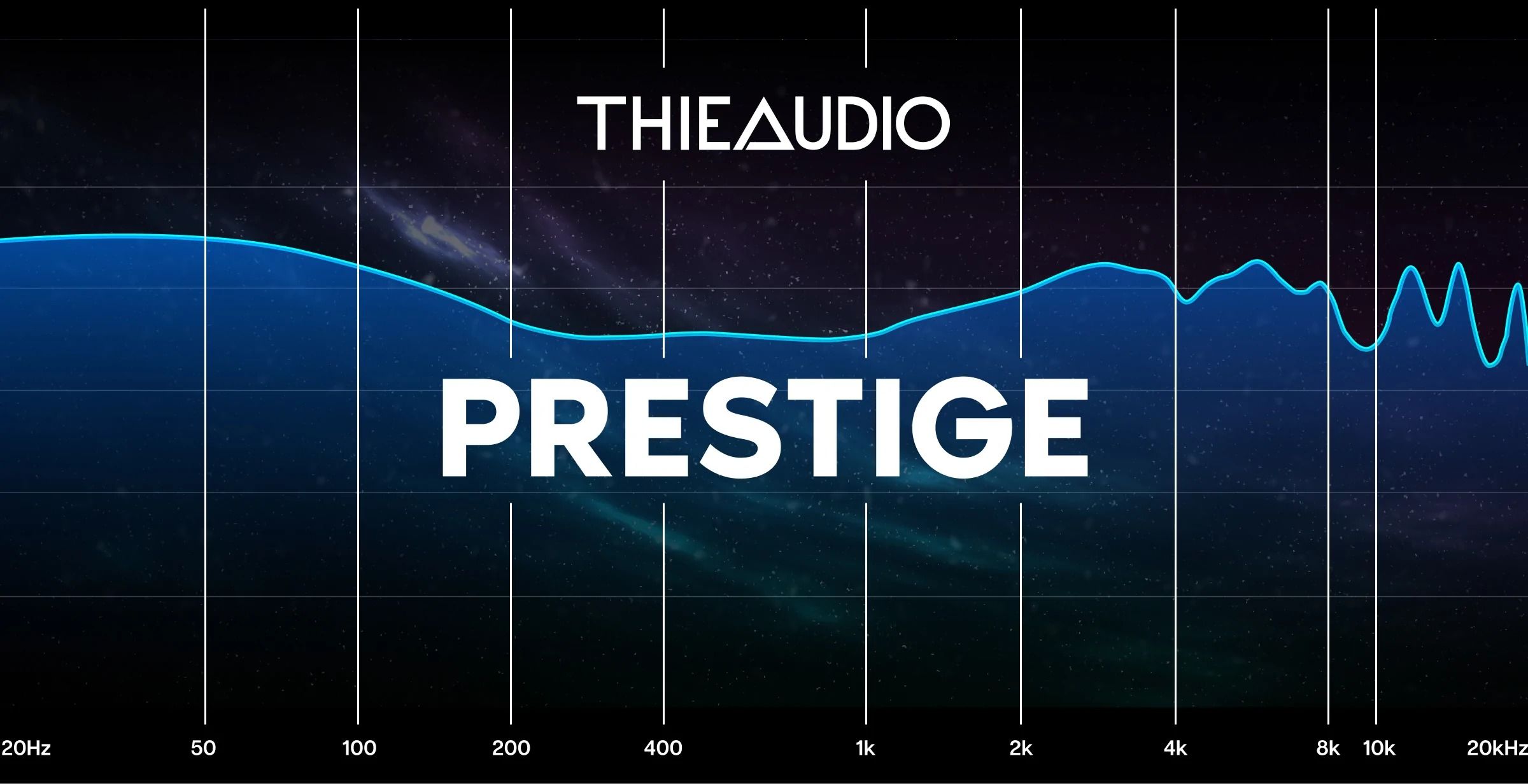
The Prestige is an interesting set. On paper it follows a U- or V-shaped tuning but if you pay special attention to the right side, you’ll notice spikes throughout the treble. The actual tonality of the set is U-shaped with an added shimmer of brightness and layer of air to the listening experience. In practice, this means things like hi-hats and cymbals really come forward in the mix. I really like this as it makes music sound lively but it certainly reshuffles the headstage a bit. If you imagine yourself standing in the room with a band, the Prestige places you three steps closer to the drummer than the singer, giving those hits extra snap and shine in the mix.
While I enjoy this quite a bit for music — it’s about balance, and the forward bass evens things out to my ears — for gaming, this isn’t such a treat and can lead to early fatigue.
As a musician, I think it’s important to note that these earphones were outstanding to use live on stage. The treble energy removed any sense of veiling I was experiencing through my personal stage mixer. I felt like I could hear more edge and tone from my guitar. While total neutrality is best for performances, I don’t think the sound was too colored for this scenario. Instead, they quickly became one of my favorite live stage IEMs.
That’s important context, especially for a Golden Ears column. In-ear stage monitors can be exorbitantly expensive. The Prestige fit right into this setting and the versatility to use them as such, and have them perform so well, really helped put the cost in context for me.
Bass: The bass on this set is very well done. It reaches deep and feels wide and expanse. It’s very detail rich with excellent textural details. The dynamic driver is very good, so the attack of bass notes is fast and cuts off equally so. This allows the low end to be punchy and dynamic. The crossover system and overall tuning of the low-end also means that even though there’s a good balance between rumbling sub-bass and thick mid-bass for bass guitars and kick drums, it doesn’t bleed into the mids and add artificial warmth.
For gaming, the bass is exquisite. It’s big and impactful, which makes cinematic moments and bursts of intense action all the more enjoyable. The control inherent in the bass also means it doesn’t muddy anything else going on in the mix, so even as a tank rolls overtop of you, you’ll still be able to hear each layer of sound creating the world around you.
Mids: The mids on the Prestige are well done but aren’t the star of the show. Vocals sound natural but aren’t as forward as they are on a set like the Monarch Mk.II. The accentuated bass and treble push vocals and mid-range instruments back a bit. This is a tricky piece to describe because, obviously, you can still hear them well enough and the detail within this range is excellent, but they lack a bit of the thickness you might hear in the Monarch or even cheaper sets like the XENNS Up or XENNS Top. This ties into the headstage impressions I lead with in this section.
With that in mind, I did like the details inherent in this region. You can still pick up all of the little nuances you would expect from a TOTL set. Micro-details, like fingers on fretboards, tinkles of breaking glass in games, the texture of brushes versus drumsticks on cymbals, all come through pristine. For that reason, the mid-range is also fine for gaming. I prefer a bit more presence for things like enemy footsteps but I didn’t feel impeded in any way which is the most important consideration.
Treble: Ah, the treble. This will almost certainly be the most divisive element of these earphones. Treble sparkles. As I mention in my lead-in to this section, treble details really come front and center. The upper-frequency harmonics come forward, which makes music sound more energetic to my ears. Hi-hats in particular pop out more than any other set I own, including most of everything Thieaudio has released in the last few years, sans the Excalibur and V16. I didn’t find it sharp in anything other than gaming but I could see treble sensitive listeners feeling that it’s a bit too energetic. Yet, for my own tastes, I think it’s actually unique and quite fun.

The air and energy becomes an issue in two areas. First, when you’re listening too loud or, second, when dynamic range comes back to bite you. I find this to be especially problematic in the Battlefield series, as the whip-crack of sniper rifles has a fatiguing crack that separates from the rest of the mix. For that game in particular, I rolled back my volume. Generally speaking, though, this isn’t an issue in most games. Rather, the added air and energy that helped to enhance my impression of the soundstage.
Technical Performance, Soundstage, and Imaging: The Prestige is every bit the technical performer you would hope for at this price point. Detail retrieval is excellent. Layering of instruments and audio elements in games is also very good, right on par with its price point (since it’s the most expensive IEM I’ve ever tested, I can’t say if it punches above or not). The space within audio sources in both games and music creates a high resolution listening experience that allows you to hear and perceive more, even in very busy sections of tracks and games. That’s important for gaming in particular, but also means that you’ll be making the most out of your listening no matter what you’re engaging with at the time.
The soundstage is excellent. It’s very wide. It’s the kind of soundstage that you just don’t get on affordable IEMs, which is why many listeners claim that IEMs aren’t capable of producing a wide soundstage. That’s simply not true and the Prestige proves it. It provides an immersive, well separated, “HD” listening experience.
Gaming: The Thieaudio Prestige is a mixed bag when it comes to gaming. On the one hand, its technical performance makes it a strong contender. There’s good positionality and soundstage, so for both single-player and multiplayer games, awareness and immersion are both highlighted. At the same time, the bright tuning can make things like gunshots sound especially sharp. Since these earphones are on the tighter side for fit, I also found that I needed to take more frequent breaks.
In other words, the Prestige offers many of the same benefits of other TOTL IEMs for gaming but comes across just a bit harder to actually wear and utilize for the same length of time. EQ can be a solid fix for the brightness and foam tips can address fit, so there’s a solution here, but you’ll need to put in a bit more work to really make the most of these for games.
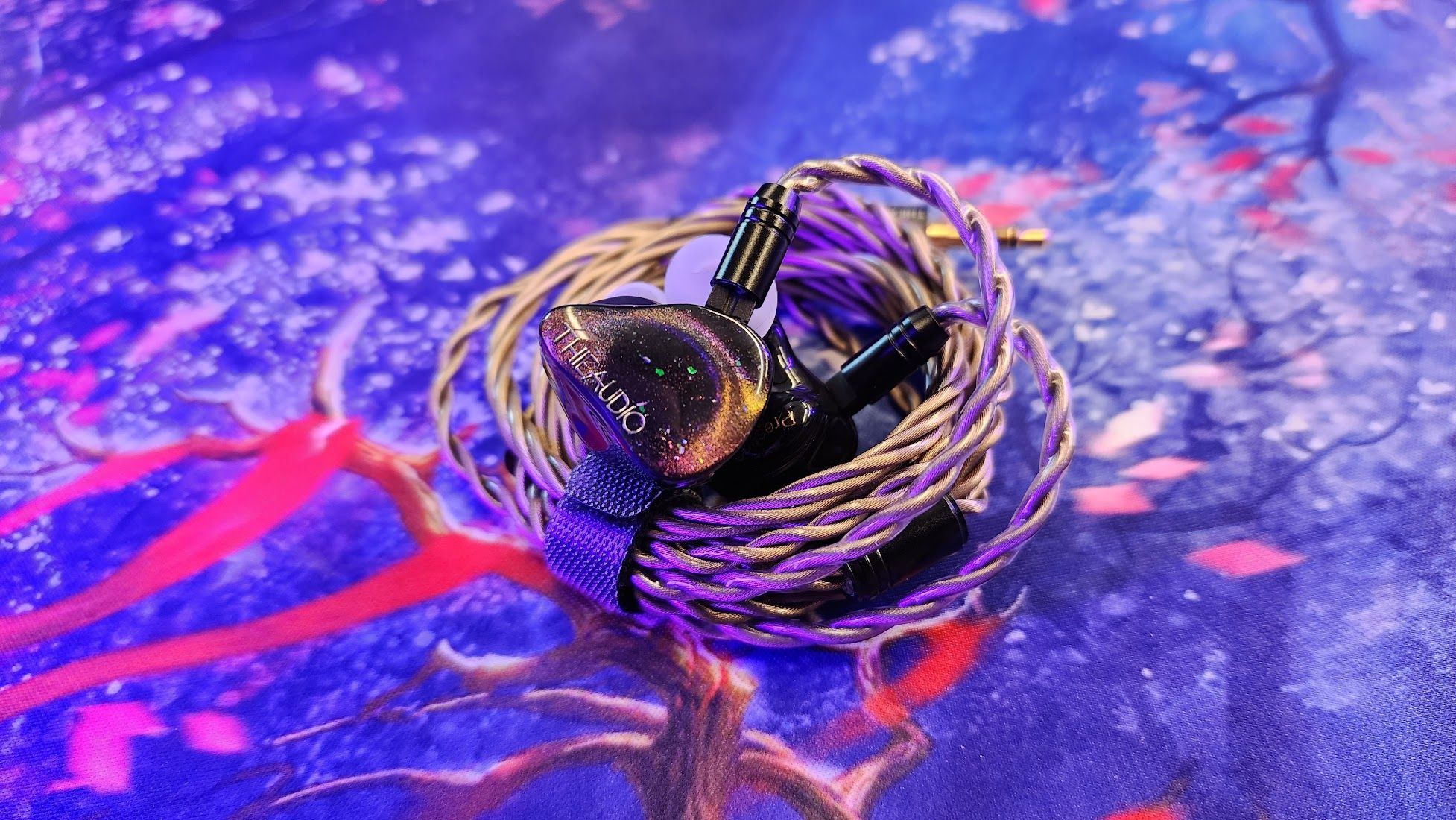
Final Thoughts
At $1299, the Prestige is asking a lot. It sounds great, if you like its bright treble region, and has excellent technical performance so you can really dig in and, to use an over-ripe cliche, hear your music and games “like never before.”
What I’ve found writing this review column is that after $500 or so, very much of the listening experience comes down to subjective taste. There are objective differences, of course, but the Prestige operates in a category where listeners are grasping at a particular sound. Which means even for shoppers considering such a pricey audio purchase, it’s going to come down to whether you like its V-shaped tuning and bright highs. Personally, I really, really do.
What Thieaudio has achieved here is impressive. I wouldn’t call it a clear winner over the Monarch Mk.II, but I would say that it’s something more unique in this space, and that, combined with its great tuning in the bass and well-done mids, make the Thieaudio Prestige a compelling choice if you crave a little extra sparkle in your listening experience.
The product described in this article was provided by the manufacturer for evaluation purposes.

